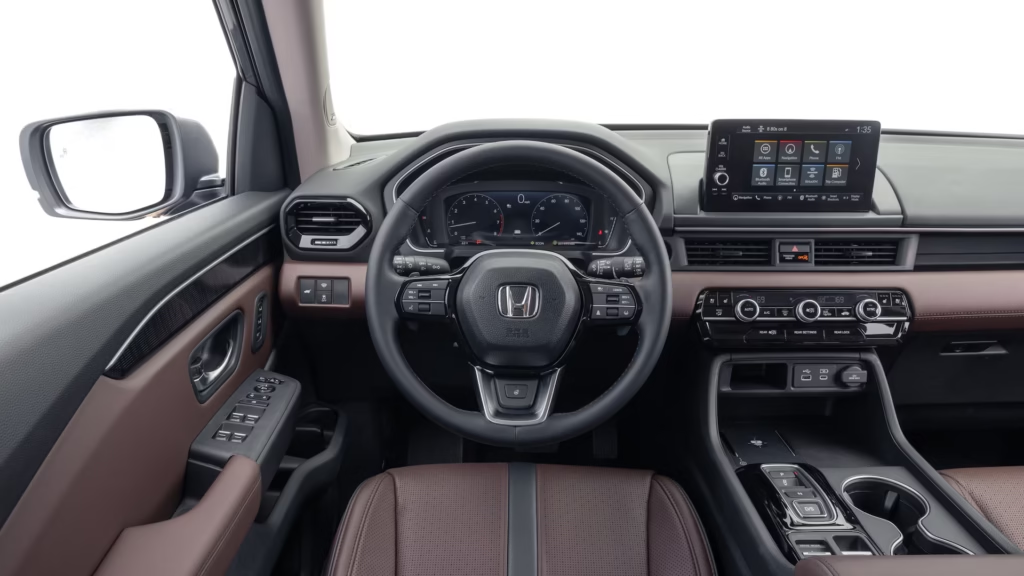The Honda Pilot has been a staple in the midsize SUV market for decades, known for its reliability, spaciousness, and family-friendly features. However, not all model years of the Honda Pilot are created equal. This guide highlights specific years you should avoid when considering a used Honda Pilot, helping you make an informed decision and avoid potential headaches.
Why Some Honda Pilot Years Are Problematic
When shopping for a used Honda Pilot, it’s important to understand that certain model years have recurring issues that can lead to costly repairs and reliability concerns. These issues may stem from engine problems, transmission failures, or electrical glitches that tarnish the reputation of specific years.
Honda Pilot Years to Avoid
2003 Honda Pilot
The inaugural 2003 Honda Pilot, while groundbreaking at its release, suffered from multiple significant issues. Owners reported frequent transmission failures, which often required expensive repairs or replacements. Additionally, the model year faced challenges with engine misfires, creating long-term reliability concerns.
2005 Honda Pilot
The 2005 Honda Pilot is another year that has garnered a less-than-stellar reputation. Many owners reported problems with the Vehicle Stability Assist (VSA) system, which could malfunction and lead to dangerous driving conditions. Moreover, complaints about engine oil leaks and excessive oil consumption were common.
2016 Honda Pilot
The 2016 model marked the beginning of the third-generation Honda Pilot, introducing significant redesigns. However, this year is plagued by issues such as jerky transmissions, infotainment system glitches, and subpar reliability ratings. Owners frequently reported transmission hesitation during acceleration, which undermined the overall driving experience.

Common Problems with These Model Years
Transmission Failures
The early Honda Pilot models, particularly 2003 and 2005, are infamous for their transmission problems. Symptoms include slipping gears, delayed shifting, and total transmission failure. These issues often occur around 100,000 miles, requiring costly repairs or replacements that could exceed $3,000.
Excessive Oil Consumption
Oil consumption issues are prevalent in the 2005 Honda Pilot. Many owners noticed the engine burning through oil at an alarming rate, leading to frequent top-offs and potential engine damage if unchecked.
Infotainment and Technology Glitches
The 2016 Honda Pilot introduced advanced technology features, but they were far from flawless. Problems included touchscreen malfunctions, unresponsive systems, and connectivity issues with smartphones.
Key Features to Look for in Reliable Honda Pilot Years
While certain years should be avoided, many Honda Pilot models offer excellent reliability and performance. Consider these features when selecting a model:
- Engine Reliability: Opt for models with a proven track record of durable engines.
- Advanced Safety Features: Look for modern safety technologies, such as lane-keeping assist and adaptive cruise control, in newer models.
- Minimal Recalls: Research the number of recalls associated with specific model years to gauge overall reliability.

Best Honda Pilot Years to Consider
If you’re set on purchasing a Honda Pilot, here are some highly recommended model years:
2013 Honda Pilot
The 2013 model stands out for its exceptional reliability and strong performance. It has minimal reported issues, making it a safe choice for buyers.
2019 Honda Pilot
The 2019 Honda Pilot is another excellent option, benefiting from modern features and improved reliability compared to earlier third-generation models. It’s ideal for families seeking a spacious and dependable SUV.
Tips for Buying a Used Honda Pilot
Inspect Maintenance Records
Always ask for a detailed maintenance history to ensure the vehicle has been properly cared for. Regular oil changes and timely repairs are indicators of a well-maintained SUV.
Check for Recalls
Before purchasing, check for any unresolved recalls on the specific model year you’re considering. The National Highway Traffic Safety Administration (NHTSA) website is a valuable resource for this information.
Get a Pre-Purchase Inspection
Investing in a professional pre-purchase inspection can save you from unexpected expenses down the road. A certified mechanic can identify hidden issues and provide peace of mind.
Conclusion
When shopping for a used Honda Pilot, avoiding problematic years like 2003, 2005, and 2016 can save you from costly repairs and disappointing ownership experiences. Focus on reliable model years with minimal issues, and always conduct thorough research before making your purchase. By following these guidelines, you’ll find a Honda Pilot that meets your needs and provides dependable performance for years to come.


